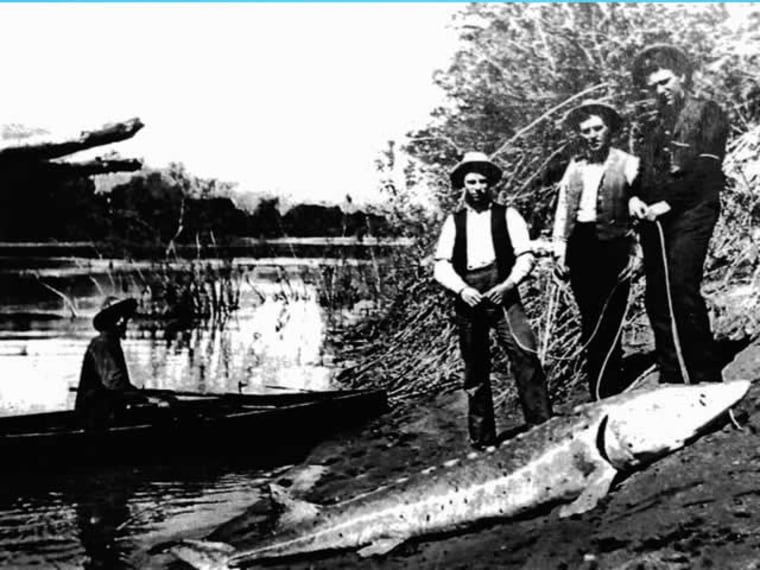As efforts falter to save North America's largest freshwater fish — a toothless beast leftover from the days of dinosaurs — officials hope to stave off extinction by sending more water hurtling down a river so the fish can spawn in the wild.
The U.S. Fish and Wildlife Service on Thursday issued a report saying attempts over the past two years to save the endangered Kootenai River white sturgeon had failed.
The prehistoric fish, characterized by a long snout and armor-like scales, can reach 19 feet long and top 1,000 pounds.
They live along a stretch of the Kootenai that passes through Montana, northern Idaho and southern British Columbia. Fewer than 500 of the bottom-feeding behemoths survive — and it's been 35 years since they successfully spawned.
The problem is Libby Dam, a hydroelectric facility in Montana run by the Army Corps of Engineers that serves power markets in the Pacific Northwest. When the dam went up in 1974, it stopped periodic flooding of Bonners Ferry, Idaho — but also high water flows that had triggered the sturgeon to move upriver and spawn.
After years of litigation, the federal government agreed to alter how it runs the dam and more closely mimic historical water flows. That hasn't worked, and fisheries officials and the Corps now say they plan to spill more water over the dam next spring.
It could be one of the last chances to stave off disaster for the massive fish: Biologists say it is on track for extinction within 10 to 15 years unless a fix is found.
Even with the increased spillover from the dam, the Kootenai River would rise to less than half its historical levels.
"We're still kind of tinkering around at the bottom end of what historically used to occur," said Jason Flory, a biologist with the U.S. Fish and Wildlife Service. "But the spring flows that were pre-Libby Dam were what flooded Bonners Ferry. You just don't do that, you don't flood towns."
The plan to save the fish came out of a 2008 settlement with an environmental group that had sued the federal government for previously failing to take action.
Noah Greenwald, endangered species director for the group, the Center for Biological Diversity, said Thursday he was "cautiously optimistic" the new measures would work.
"There's no way of knowing if it will be successful or not," he said. "We certainly hope so, because the sturgeon is running out of time."
